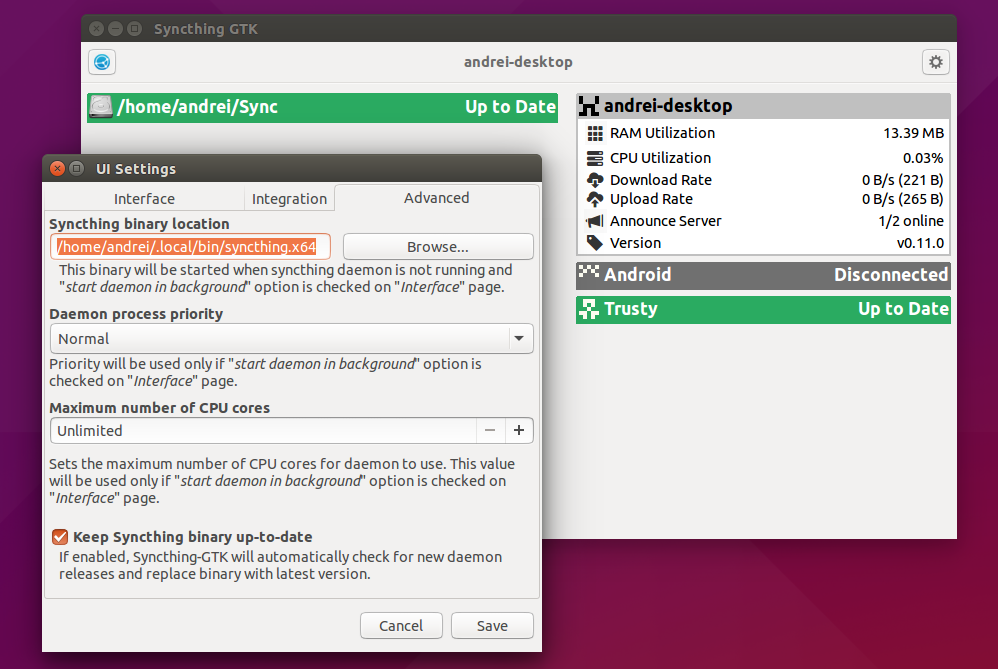

#DAEMON SYNC UBUNTU HOW TO#
The example below shows how to create a local backup of website files: rsync -a /var/If the destination directory doesn’t exist, rsync will create it. The real power of rsync comes when synchronizing directories. If you want to save the file under a different name, specify the new name on the destination part: rsync -a /opt/filename.zip /tmp/newfilename.zip Omitting the filename from the destination location copies the file with the current name. The user running the command must have read permissions on the source location and write permissions on the destination. Here is an example: rsync -a /opt/filename.zip /tmp/ The most basic use case of rsync is to copy a single file from one to another local location. By default, rsync is configured to use ssh. This option allows you to choose a different remote shell. Use this option if you want to suppress non-error messages. When this option is used, rsync deletes extraneous files from the destination location. It is useful when transferring large files over slow or unstable network connections. When this option is used, rsync shows a progress bar during the transfer and keeps the partially transferred files. Use this option only if the connection to the remote machine is slow. This option forces rsync to compresses the data as it is sent to the destination machine. This option tells rsync to syncs directories recursively, transfer special and block devices, preserve symbolic links, modification times, groups, ownership, and permissions. -a, -archive, archive mode, equivalent to -rlptgoD.Rsync provides a number of options that control how the command behaves. The rsync utility expressions take the following form:
#DAEMON SYNC UBUNTU INSTALL#
Install Rsync on Ubuntu and Debian # sudo apt install rsync Install Rsync on CentOS and Fedora # sudo yum install rsync Rsync Command Syntax #īefore going into how to use the rsync command, let’s start by reviewing the basic syntax. If you don’t have rsync installed on your system, you can easily install it using your distribution’s package manager. The rsync utility is pre-installed on most Linux distributions and macOS. This article explains how to use rsync through practical examples and detailed explanations of the most common rsync options. Rsync can be used for mirroring data, incremental backups, copying files between systems, and as a replacement for scp It provides fast incremental file transfer by transferring only the differences between the source and the destination. Rsync is a fast and versatile command-line utility for synchronizing files and directories between two locations over a remote shell, or from/to a remote Rsync daemon.


 0 kommentar(er)
0 kommentar(er)
